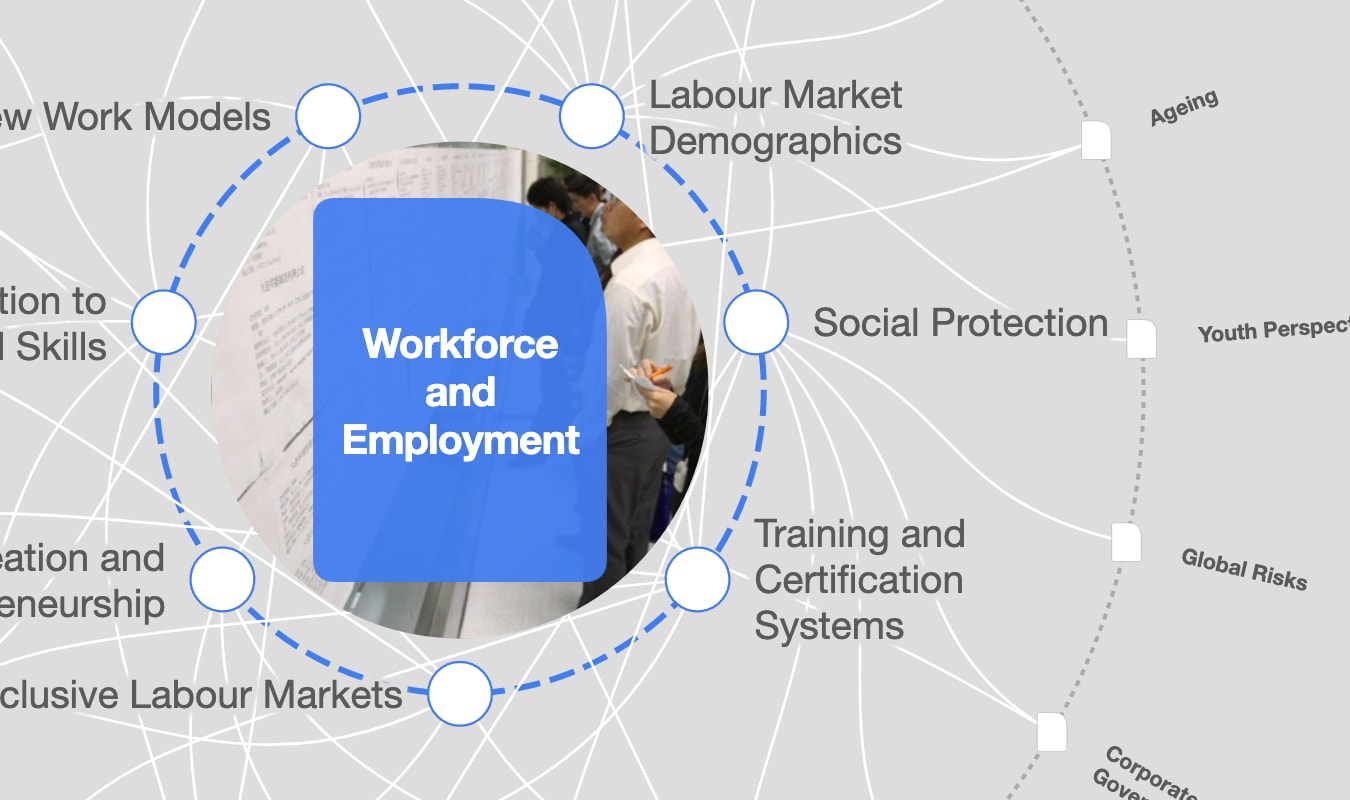9 out of 10 organizations are switching to hybrid working, according to a McKinsey survey

Could hybrid working be here to stay? Image: Unsplash/Yasmina H

Get involved with our crowdsourced digital platform to deliver impact at scale
Stay up to date:
Future of Work
- Nine out of 10 organizations will be combining remote and on-site working, according to a new McKinsey survey.
- This is following the proof that businesses are able to adopt remote working, continue to be productive and see employee satisfaction rise as a result.
- These eight charts show the COVID-19 pandemic has shifted decisions around hiring and management.
In the postpandemic future of work, nine out of ten organizations will be combining remote and on-site working, according to a new McKinsey survey of 100 executives across industries and geographies.1 The survey confirms that productivity and customer satisfaction have increased during the pandemic.
Despite the embrace of a hybrid model, though, most organizations have only begun to think through and articulate the specifics of how to carry out a more permanent mix of remote and on-site working for all roles that aren’t essential to perform on-site. Many of their employees are feeling anxious as a result. The sustainability of pandemic-style productivity gains might well depend on how organizational leaders address the anxiety their employees feel—and the associated levels of burnout.
The following charts, drawn from our survey, offer insights for executives who are sorting out the particulars of the hybrid approach. A notable finding is that organizations with the biggest productivity increases during the pandemic have supported and encouraged “small moments of engagement” among their employees, moments in which coaching, mentorship, idea sharing, and coworking take place. These organizations are preparing for hybrid working by training managers for remote leadership, by reimagining processes, and by rethinking how to help employees thrive in their roles.
The future will be more hybrid. Prior to the COVID-19 crisis, the majority of organizations required employees to spend most of their time on-site. But as the pandemic eases, executives say that the hybrid model—in which employees work both remotely and in the office—will become far more common. The majority of executives expect that (for all roles that aren’t essential to perform on-site) employees will be on-site between 21 and 80 percent of the time, or one to four days per week.

Future vision. Although nine out of ten executives envision a hybrid model going forward, most have at best a high-level plan for how to carry it out—and nearly a third of them say that their organizations lack alignment on a high-level vision among the top team. Although another third of organizations have a more detailed vision in place, only one in ten organizations have begun communicating and piloting that vision.

Productive nonetheless. The survey also confirms that during the pandemic most organizations have seen rises in individual and team productivity and employee engagement, and, perhaps as a result of this increased focus and energy, a rise in the satisfaction of their customers as well.
But not every organization has experienced the same improvement. Take individual productivity. Some 58 percent of executives report improvements in individual productivity, but an additional third say that productivity has not changed. Lagging companies, which make up 10 percent of respondents, relate that individual productivity has declined during the pandemic. It’s important to note the high correlation between individual and team productivity: C-suite executives who say that individual productivity has improved are five times more likely to report that team productivity has risen too.

Making the small connections count. Why have some companies enjoyed higher productivity during the pandemic? According to our survey, they’re the ones supporting small connections between colleagues—opportunities to discuss projects, share ideas, network, mentor, and coach, for example. Two-thirds of productivity leaders report that these kinds of “microtransactions” have increased, compared with just 9 percent of productivity laggards. As executives look to sustain pandemic-style productivity gains with a hybrid model, they will need to design and develop the right spaces for these small interactions to take place.

Managing differently. Supporting small moments of connection requires subtle shifts in how managers work. Nearly all executives surveyed recognize that managing remotely differs from when all employees are on-site, but other subtleties may not be as apparent. Nuances can be seen in the more than half of productivity leaders that have trained their managers on how to lead teams more effectively. Only a third of productivity laggards have done the same. The emphasis on small connections suggests that organizations could better support managers by, among other things, educating them about the positive and negative impact they have on the people who report to them, and by training managers on soft skills, such as providing and receiving feedback. Organizations can also explore novel ways to address the loss of empathy that often accompanies gains in authority.

Experiment and iterate. Across organizations, executives already recognize the need to redesign processes to better support a remote workforce—with the majority having at least identified the processes that will require rethinking. But productivity leaders are more likely to continually iterate and tweak their processes as the context shifts. As organizations look to codify the hybrid model, there is evidence that the test-and-learn approach to process redesign will be an important enabler.
Reimagine hiring. Hiring is among the most crucial processes to reconsider in the hybrid world. Should organizations continue to hire within specific geographies, or should they open up their talent aperture beyond traditional recruiting locations, for instance? Should they conduct more remote interviews? During the pandemic, nearly two-thirds of organizations have moved in-person recruiting events and activities to remote settings, but only one in three have reimagined hiring from the ground up. Forty percent of productivity leaders, by contrast, have holistically redesigned their entire hiring process.

Rethink talent allocation. During the pandemic, nearly two-thirds of organizations have reassessed the number of people in each role and in each function in the company. But productivity leaders are more likely than middle performers and laggards to fall into this category. A select few leading companies have taken it even further and have gone beyond reassessing to actually implementing changes. As organizations redesign their hybrid future, matching the workforce with the right priorities could help spur productivity improvements.

Don't miss any update on this topic
Create a free account and access your personalized content collection with our latest publications and analyses.
License and Republishing
World Economic Forum articles may be republished in accordance with the Creative Commons Attribution-NonCommercial-NoDerivatives 4.0 International Public License, and in accordance with our Terms of Use.
The views expressed in this article are those of the author alone and not the World Economic Forum.
Related topics:
The Agenda Weekly
A weekly update of the most important issues driving the global agenda
You can unsubscribe at any time using the link in our emails. For more details, review our privacy policy.
More on Jobs and the Future of WorkSee all
Roman Vakulchuk
April 24, 2024
Eli Joseph
April 19, 2024
Kate Whiting
April 17, 2024
Juliana Guaqueta Ospina
April 11, 2024
Victoria Masterson
April 9, 2024








